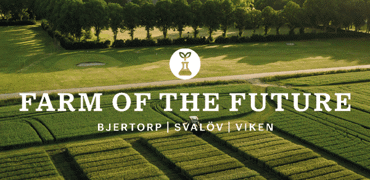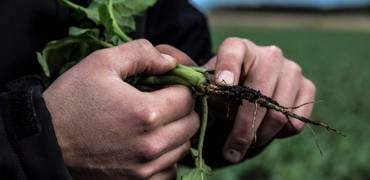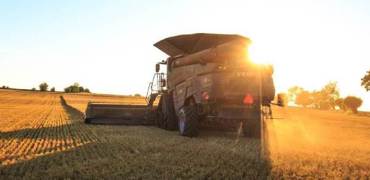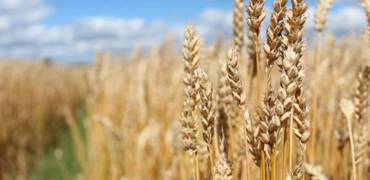Several new studies in a lab environment show that the addition of Asparagopsis taxiformis, a species of red algae, in feed for ruminants, results in a significant reduction in methane production in cows. Some of these studies have shown a reduction of as much as 50-80 percent. For this reason, Lantmännen, in partnership with Swedish start-up Volta Greentech, is testing red algae at Nötcenter Viken dairy farm.
“The methane-reducing effect has very largely been proven, and we now want to investigate how this affects other parameters. We want to find out if the cows eat the feed to the same extent, if the milk production is affected when it comes to yield and composition. So far, the results look promising,” says Cecilia Lindahl, Product Developer at Lantmännen Lantbruk who is responsible for the project.
As part of the trial at Nötcenter Viken, 24 of the 400 cows on the farm are being fed in a separate trial area. The cows have been divided into two equal groups where one group is given a TMR (total mixed ration) with added red algae, and the other group gets the same mix without algae. Daily feed consumption, milk yield and milk quality are being recorded individually for the 24 cows over a five-week period. Today the cows yield around 40 kg ECM (energy corrected milk) on average and consume about 24 kg DM (dry matter) of TMR.
“The aspects we are currently investigating are fundamental to determining whether continuing with feed development will be of value. The reduction in methane emissions would be an expensive measure if we find the cows do not eat the feed, or if it has a negative effect on the quantity or quality of the milk. Milk production of the future ought to be both highly productive and climate efficient,” says Claes Johansson, Head of Sustainable Development at Lantmännen.
Project partner Volta Greentech has developed a method of cultivating red algae which means availability is assured.
“Our research is based at the Karolinska Institute in Stockholm both to optimize the nutrient value of the algae and to develop our own technology to optimize growth in a lab environment. What’s more, we have just opened our first factory in Lysekil where we have started to produce the algae via our land-based cultivation system,” says Linus Holmsäter, CCO of Volta Greentech.
How much of the methane output is reduced depends on the amount of red algae in the feed, but earlier tests indicate that a 50 to 80 percent reduction is a reasonable expectation.
The Lantmännen feed trial aims to monitor the effects of the new feed and find practical solutions to be able to use red algae feed on Swedish farms.
“We are continuing our efforts to develop smart feed products for the Swedish market. If this study produces good results, red algae can become an important ingredient in the feed of the future,” says Lindahl.
For more information, please contact:
Cecilia Lindahl, Product Developer, Lantmännen Lantbruk
Phone: +46 724 54 49 90
E-mail: cecilia.lindahl@lantmannen.com
Lantmännen Press Office
Phone: +46 10 556 88 00
E-mail: press@lantmannen.com























